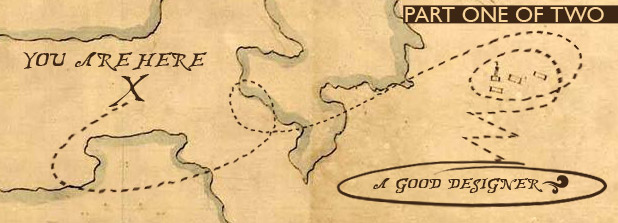How to Find a Web Designer in Santa Barbara – And Avoid Getting Ripped Off (Part 1 of 2)
Posted Under: Education | Written by Dia Becchio
 Being that a large number of our clients have come to us broken, previously mislead, and just plain irked from prior experiences, I felt it my due duty to compose a short “how-to” on choosing and interviewing a graphic designer. In this two-part post I’ll highlight some brief points from an insider point of view.
Being that a large number of our clients have come to us broken, previously mislead, and just plain irked from prior experiences, I felt it my due duty to compose a short “how-to” on choosing and interviewing a graphic designer. In this two-part post I’ll highlight some brief points from an insider point of view.
1. Find a communicative company.
The easiest company to contact might be one in your own town. Picking a local company means someone who can meet you for coffee to brainstorm, someone who is a verified human being (someone who you can hunt down if they’ve left you high and dry). Aside from it being a good way to test the character of a designer, a local business will understand your community in ways that quirky designer in Nova Scotia cannot. On the other hand, you don’t have to limit yourself to those just in your city limits. The internet allows you to draw from a huge pool of talent. The key is finding a web designer that is willing to get to know what makes your company tick – that’s why communication is number one.
2. Choose a firm that has a contract.
I know, this seems like a no-brainer, but really – don’t hire someone if you haven’t signed (and read) their contract. Working under a contract will protect both the company’s and your assets. The contract should clearly lay out all the nitty-gritty details on the table, and clearly define both the client and designer’s responsibilities.
3. Ask for a timeline.
This handy dandy schedule outlines project launch date, payment schedule, and important milestones. It doesn’t have to be pretty but it should be clear and concise. Trust me, waiting in the dark twiddling your fingers is not a happy place to be and you’ll want to work with someone willing to identify clear dates and goals for your project.
4. View their portfolio.
Your designer should have a solid portfolio with a good range of work. Do they have the ability to mesh with your vision, or are they pretty set in their personal style and design zone? We’re looking for quality here, not quantity.
5. Ask around.
Don’t be afraid to ask your potential designer for a few contacts from their previous projects. It’s always good to get a review from an unbiased and experienced client.
6. Pay a fair wage.
In the field of design, cheaper is definitely NOT better. Just because you can get a design for what is essentially $2/hour doesn’t mean that you should.
Written by Dia Becchio
*Edited by Alan Dowling
